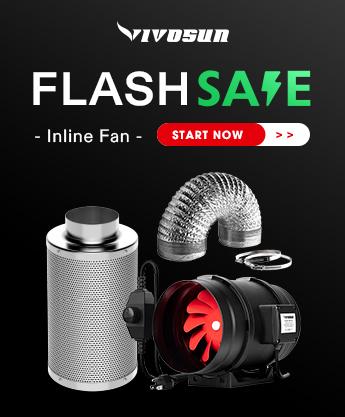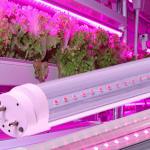A grow tent is an invaluable asset you may require as a cannabis farmer since it helps to create an environment that gives you control over the planting conditions. A grow room cannot work without is a ventilation system to control its internal atmosphere. An exhaust system is responsible for the circulation of air inside and outside the grow room creating conditions that will enable the cannabis plants to thrive. It helps to regulate the temperature, humidity, and carbon dioxide, which affect photosynthesis that the plants require to grow.

Every cannabis grower should have a working ventilation system that provides consistent conditions for the rapid growth of the plants. This article aims to educate you on the importance of having an exhaust system and how to set it in a grow tent.
New Product: ( On 2021)
Note: Up to 35$ off + extra 15% discount on inline fan with code AFF15 for link above
Best Equipment About Climate Control For Grow Cannabis Indoor 07- 2025
What is the importance of air circulation in a grow room?
There needs to be sufficient air exchange in a grow tent for ventilation to be adequate. You, therefore, need to acquire an extractor fan to get a better chance of controlling the internal environment of your grow room for fast plant growth. Here are some of the reasons why ventilation is essential.
-
Regulation of Temperature
An indoor growing environment is very different from an outdoor setting. When you grow cannabis plants outside, you expose them to a continuously flowing air; hence they will rarely have any problems regarding heat. It is a different case for plants that grow indoors. The artificial light you provide to the plants produces heat. You need to remove this heat from the grow room before it becomes excessive, leading to the discoloration of leaves, wilting ad even death of the plants.
You, therefore, need to have an exhaust system in place to help with the circulation of air by getting rid of the hot air in the room and bringing in cold air to balance the conditions.
-
Regulation of Humidity
Humidity is well known to be the air’s ability to hold water. It is the amount of water in the atmosphere that determines how fast a plant will grow. A cannabis plant has three growth phases where each phase requires its level of humidity. An indoor grow tents give a cannabis grower the ability to control the level of moisture, thereby setting the optimum growth conditions they can leverage to get the best plant growth. It is very different than an outdoor setting where no one can gain control over the elements.
One of the factors that lead to an increase in humidity is transpiration. When the plants give off water, the grow room will become damp due to the rise in levels of moisture. You, therefore, need to have a way that can help you get rid of the humid air.
[amazon box=”B017IJF2JE” grid=”1″]-
Controlling the buildup of CO2
Plants require carbon dioxide to grow. They need it for the process of photosynthesis together with the chlorophyll in the leaves to create their food. The process takes place during the day. However, during the night that plants intake oxygen and give off carbon dioxide as a result. When plants grow indoors, it may be difficult for air in the grow room to leave if you do not have an exhaust since the tent is enclosed. Therefore the carbon dioxide that the plants produce at night may accumulate, creating an imbalance in the ratio of carbon to oxygen. An excellent ventilation system helps in purifying the air, thereby solving the problem.
-
Strengthening of the plant’s stems
The strengthening of the stems of a cannabis plant is an indirect benefit that comes when you grow your plants indoors. But how does it happen? Once you set up an exhaust system in a grow room, there will be several fans regulating the indoor temperature by creating airflow. When the fans are active, they will gently blow on the stems of the plants forcing them to bend and sway gently. This continuous breeze on the plants helps in strengthening their stems as they get ready to support the buds in development.
-
Reducing the chances of Bud Rot, Mold and White Powdery Mildew
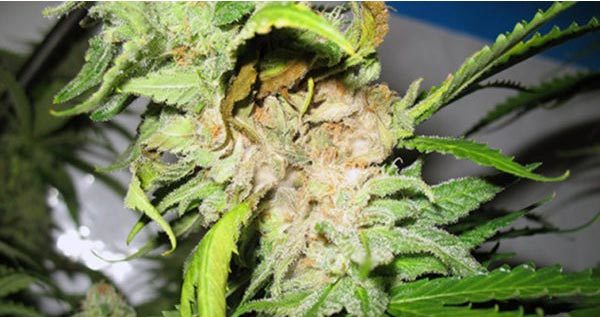
Mold, Bud rot, and White powdery mildew are more likely to occur on a plant that has high levels of moisture and humidity. Once you set up the ventilation system, the continuous flow of air helps to control the amount of moisture in the air. Any moisture that the plants release as well during transpiration is carried away by the air currents reducing the chances of the occurrence of white powdered mildew, mold, and bud rot.
-
Protection from garden pests
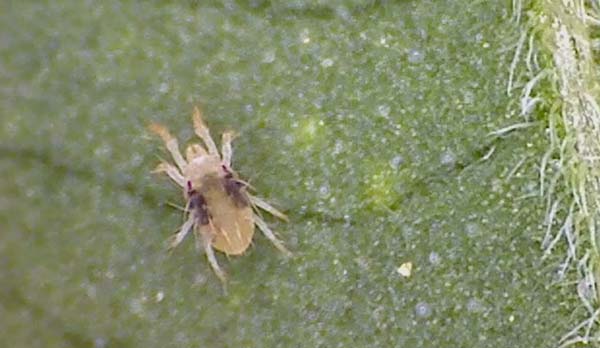
Fungus gnats and spider mites are prevalent pests that attack plants and are especially deadly to cannabis plants. They can thrive in an environment that has stagnant air. However, a ventilation system prevents them from taking dominance by creating lots of air circulation, drying the growing medium or soil. It is a protective measure against the breeding of the pests and the rearing of diseases.
Ventilating the Grow room
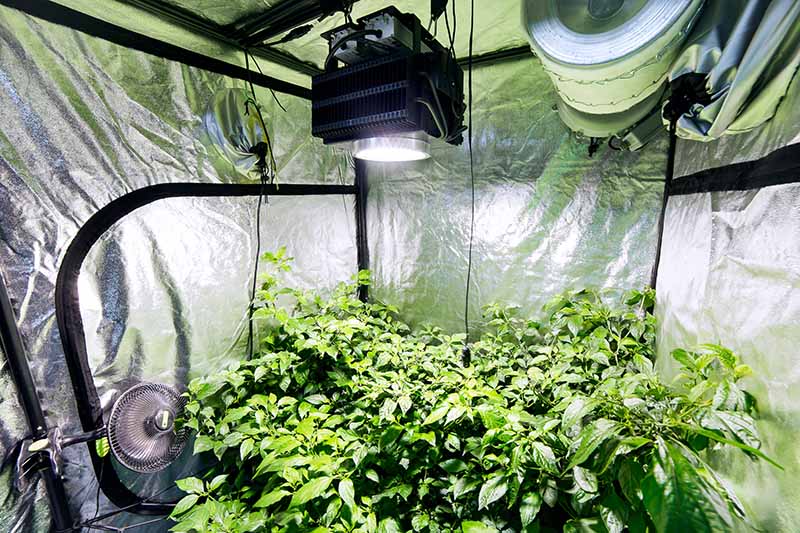
When you set up a grow room ventilation system, there are two types of fans that you should have:
You can readily find oscillating fans at a cost-friendly price. Their main job is to help in keeping the grow room cold by blowing air all around the grow room. They are quite easy to set up, and their design enables then to work in all directions. When choosing a size to use, you should consider the size of your grow tent. You want to have the fans spreading a gentle cool breeze around your marijuana canopy. Therefore you should set your fans in a way that they blow both above and under the plants. You should be careful about how you position the oscillating fans. Make sure they do not blow strongly towards your cannabis plants. It may cause damage to the stems, leaves, and buds. However, position them in a way the wind from the fan reaches all corners of the grow room. If you find a blind spot in your grow room, move around the fans until they cover all the areas.
While the oscillating fans help with the control of temperature and humidity, you need an air extractor fan that will bring in the fresh air and purify it. It replaces the stagnant air in the grow tent with fresh air that is important for the growth of the plants. There are two ways through which air may flow into a grow room:
-
Through Passive intake
In a passive intake, there is a hole that lets in the air while a fan blows the air out. As the fan sucks out air from the grow room, it creates a vacuum, and fresh air flows in through a hole from the bottom of the tent. It follows the negative-pressure law, where the grow tent develops a lower pressure than the surrounding environment.
If your grow room uses a passive intake method, you should ensure that the intake hole is bigger than the exhaust hole three or four times to allow for the proper suction of air. You may as well opt to install more than one passive intake hole to increase the amount of air flowing into the grow room.
-
Through Active Intake
An active intake is slightly different since it utilizes a fan to drive air into the grow room. Your grow room will, therefore, have two other fans, one blowing air into the grow room and another blowing air out of the grow room. In an active intake, the size of the intake hole does not matter. Moreover, you need to use the active intake system if your tent is enormous or if you face problems brought about by high temperatures.
Some other equipments that are necessary for proper air circulation in a grow room include:
An Active Carbon Filter
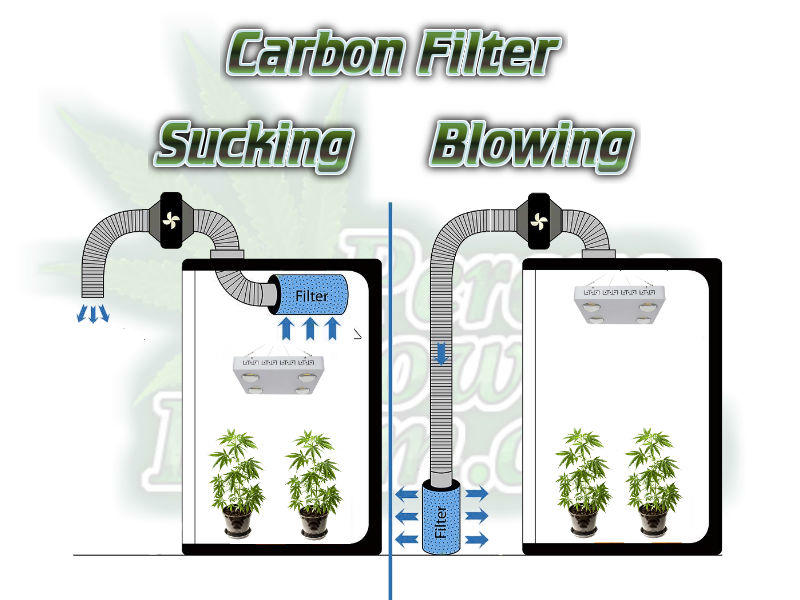
It is a device that you need if you are growing marijuana consisting of highly aromatic strains. Marijuana is known to have an odor that may not be pleasing to everyone. A carbon filter can help you prevent your neighbors and anyone else from knowing that you are growing cannabis as it absorbs the smell.
[amazon bestseller=”carbon filter” items=”2″]Acoustic box
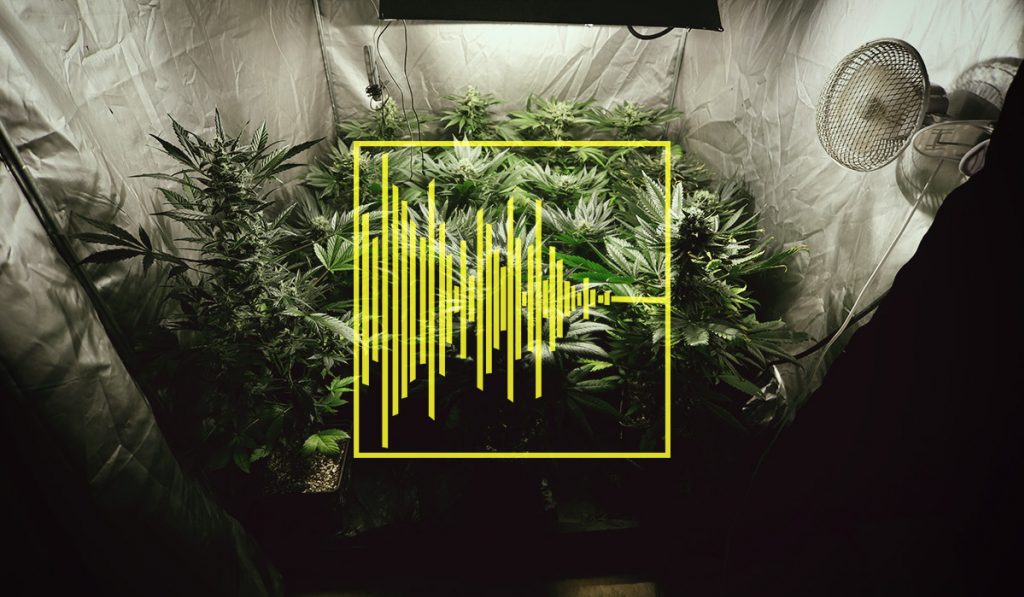
This device will help you reduce the noise your exhaust or intake fan makes, thereby reducing noise pollution.
[amazon box=”B01CTM0J70″ grid=”1″]Thermo-Hygrometer
This device is a 2 in 1 hygrometer and thermometer that can help you keep track of the humidity levels in your grow tent. You can choose to either have them separately or get one that gives you both results. You need to set several thermo-hygrometers in different sections of your grow tent to help you monitor the temperature and humidity readings in different parts of the room, and ensure that they are all the same.
Choosing an exhaust fan for your grow room
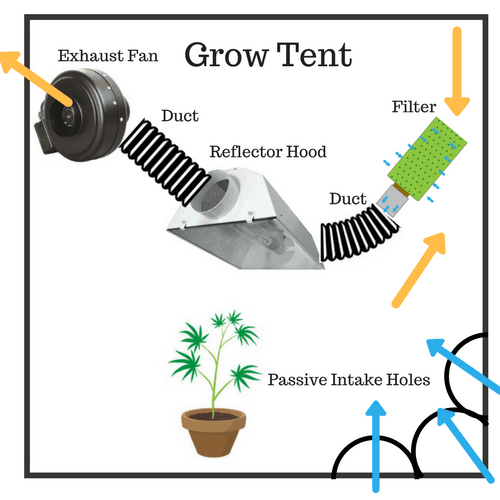
When selecting an exhaust fan, you need to know how much air it can circulate in cubic feet per minute since that is the standard rating all over the US. To figure out the volume capacity of an exhaust fan that you need to multiply the volume of the growing space, with the time of air exchange and the loss of efficacy.
Loss of efficacy x time of air exchange (hours) x volume of growing space = volume of the required exhaust fan
You can get the volume of your grow space by multiplying the length, width, and height of your grow tent. The equipment you use in a grow tent is not always perfect. You will still have to account for some inefficiency of which most growers account for a 25 percent loss.
Therefore, if your grow room measures 12′ x 6’x 6′, the air volume will be 432 cubic feet. You can, therefore, get the minimum volume capacity of the exhaust fan by multiplying the volume with the loss of efficiency and time duration of one hour that equates to 60 minutes
432m3 x 1.25 x 60 = minimum volumetric capacity per hour of the exhaust fan. = 32,400 m3/hour. This amount is the exhaust capacity that your grow room may require. When sourcing an exhaust fan, it is better to get on that has a higher-performing power to always stay on the safe side.
When should you keep your fans on and off?
As mentioned earlier, the two most important kinds of fans in a grow tent are the oscillating fans and extractor fans. However, both of them do not always run at the same time.
You should always ensure that your extractor fans are running when the lights are on. Though, you should ensure that the fans run with the custom CFM rating of the grow tent. The oscillating fans should as well run entirely when the lights are on. When the lights are off, the production of heat temporarily halts. You can then reduce the seed of the exhaust fans for the first 20 minutes, and when the temperature and humidity reduce to a standard level, you can then run the fans on a regular frequency, a few minutes every hour till you turn on the lights again. Even if there is no heat from the light, the oscillating fans still need to keep running. As the plants continue to breathe, a rise in humidity is always a concern.
Summing up
As you can see from the above guide, the process of setting up the ventilation system in your grow room is not too complicated. You only need to follow the instructions set out for you, and you will keep harvesting healthy and abundant cannabis buds. Do not hold back when investing in your grow room ventilation system. When you get an air circulation system, invest in it, regardless of the price point. It will be of help in getting rid of any pests and diseases that may affect your plants.
As you can see, it is one of the most critical factors affecting the growth of your marijuana. However, this does not mean that you compromise on the quality of the products you choose to use. Make sure that the fan and filters you use are strong enough to help create a suitable environment for your plants for a long time. Since you are now well equipped with the tips to setting up an exhaust system for your plants, we hope your grow room will be successful. If you happen to land on any problem while setting up, feel free to reach out to us.
[amazon bestseller=”grow tent kits”]
